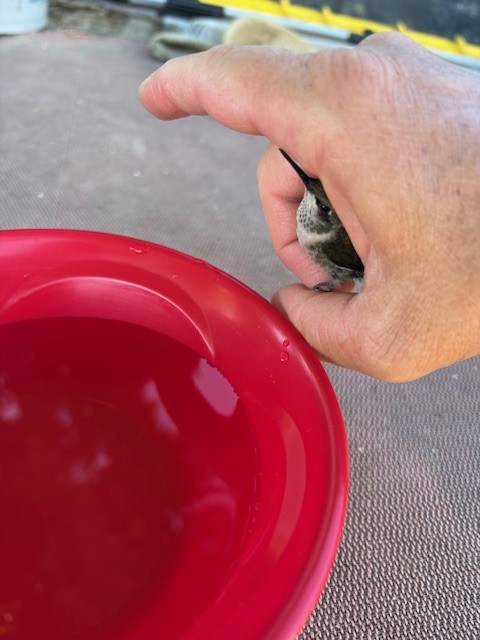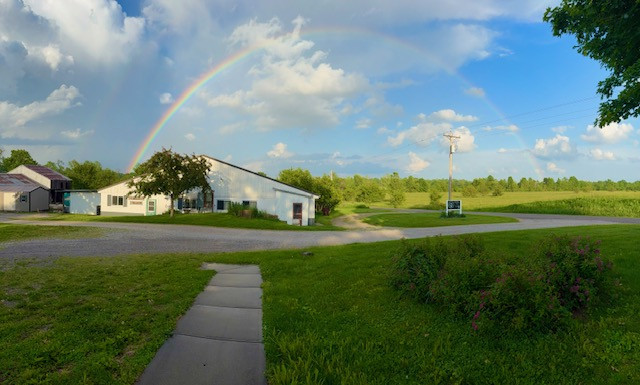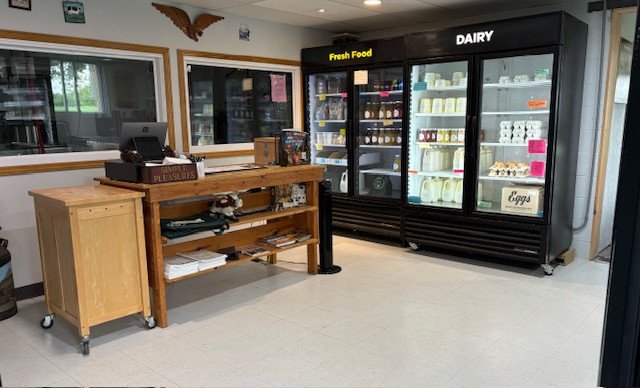When Bad Things Are Good
posted on
January 26, 2021

Cows eating some hay we dropped on a heavy fescue area.
This is a way to accumulate more animal pressure and fertility in certain places.
If you've followed us for very long, you may have heard me mention a type of grass called fescue. Kentucky-31 tall fescue to be exact. This grass, while not native to our part of the world, is now very prevalent in this multi-state region. One of the defining characteristics of tall fescue is that during the growing season it has a symbiotic relationship with a fungal endophyte. This endophyte gives the grass plant qualities which increase its survivability, particularly evident during a drought. It's a beneficial relationship between the fungus and plant, but not so great for animals that consume it. The fungus produces ergot alkaloids which can significantly impact animal health in a negative way when consumed in excess. This is manifested in the form of reduced heat tolerance (because of vasoconstriction and resulting low-grade fevers), lowered conception rates (fertility is affected), and in very severe cases can lead to necrosis of extremities. Interestingly, there are some animals that seem to carry more resistance than others to the effects of the alkaloids. So it is likely possible to select for genetics that can perform well even in the face of this environmental challenge.
Even so, why in the world would anyone allow their livestock to eat such rubbish?? In a word: winter. Once temperatures start dipping below freezing, the endophyte dies off. The frosts and freezes cause the starches in the grass to turn into sugars, increasing its palatability, so it actually becomes pretty tasty to the animals! And with little to no effects from the endophyte, livestock can and do flourish while grazing fescue through the winter.
Rest is a critical component of regenerative grazing. I would venture to say that it's not possible to build soil without including rest correctly in the equation. However, we have found that too much rest (and not enough animal impact at just the right time and for the correct amount of time) favors fescue proliferation. Without enough "abuse" to this grass under particular conditions, it will outcompete and smother other species. The presence of other species is important because a) diversity is not only beautiful but necessary for life, and b) the presence of other plant species "waters down" the effects of the endophyte.

Cows grazing some stockpiled fescue
For the first time in 20 or more years, the entire herd is staying on the home farm for the winter. And what better time to graze fescue than in the winter? We had some pastures we "stockpiled" by not grazing them throughout the fall. Think of it like standing hay (minus the time, fuel, and labor expenses), only there's still some green in it. That's another thing about this grass...even at temps around freezing it will stay a little green and actually still exhibit a bit of growth when it's pretty chilly. Cows like green stuff in the winter! Additionally, we've rotated them through pastures that were grazed in the late fall as well. There was a small amount of regrowth, and they were quite content to nip those little green shoots off while also cleaning up some of the leftovers from a couple months prior. Grazing grass that has not had a chance to fully recover weakens the root system. Ordinarily this is not a recipe for good grazing management. But in theory if we weaken the fescue and open up the canopy, other plants will have a better chance to compete when life returns in the spring. Weed germination and proliferation can be a concern when animal hooves tear up a pasture too much. It's been a battle here for years because of many muddy springs and accompanying hoof action. But my theory is that there may be times in the winter when a little extra abuse, at least to a strong stand of fescue, doesn't necessarily wake up weed seeds unless that abuse is repeated in the spring when the ground is soft or wet.

They're the pasture cleanup crew!
One of this year's goals here is to plant more types of forages that will improve the pastures and give the cows even better nutrition. It's not as simple as just tilling up fescue and getting rid of it (especially without multiple chemical applications, as there is a plentiful seed bank in the soil). And some would say that tillage is one of the worst things to do if you want to improve soil health. Besides, with the value fescue can bring to winter grazing I don't want to completely get rid of it at this point. Remember, to everything there is a season. Even that which seems to be negative in so many ways may become a great asset in the next season!





